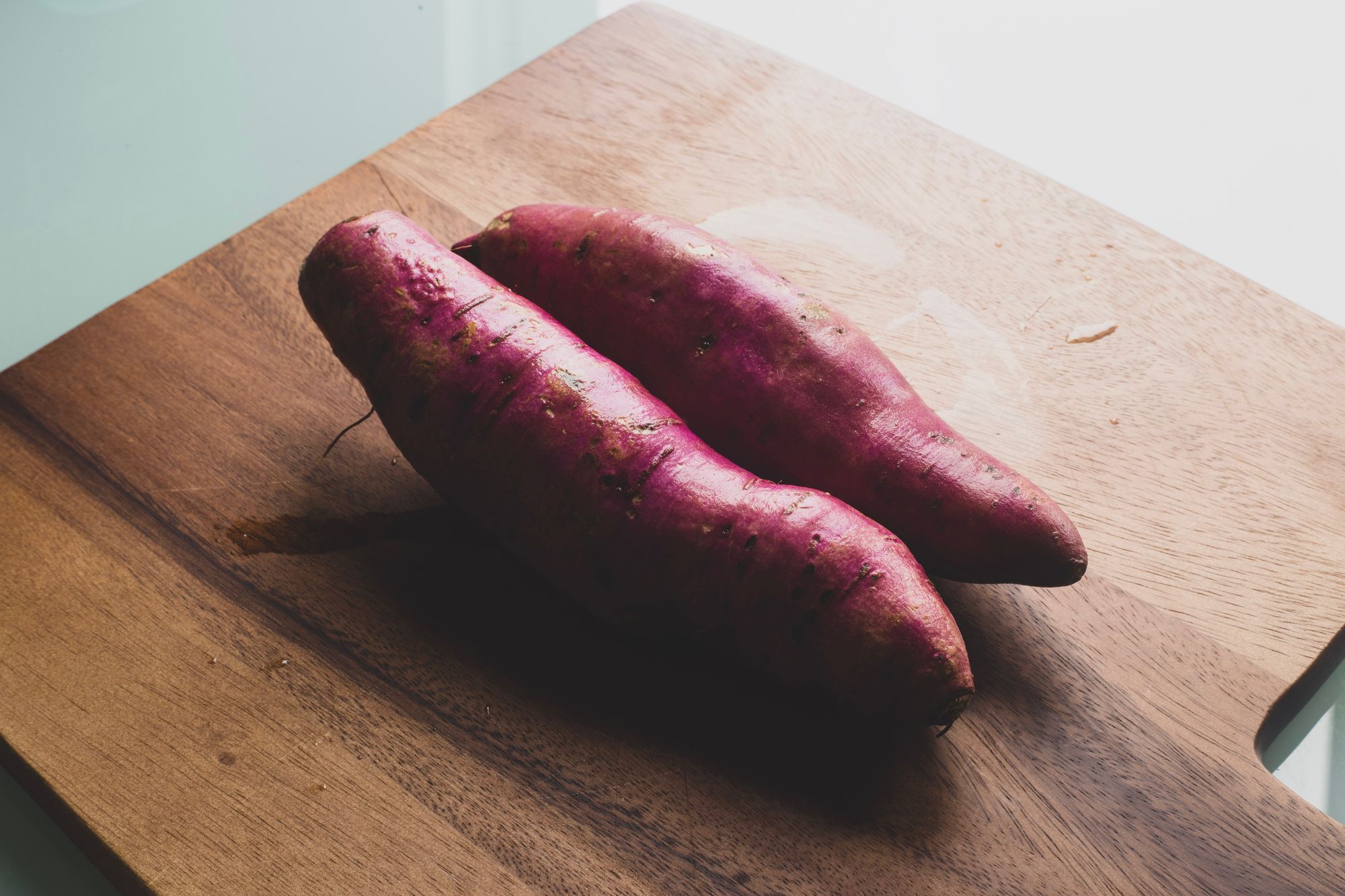Sweet Potatoes and Nutrition Security

Most of us have tried the classic orange sweet potato, but have you tried the Japanese Sweet Potato? At WellFed Community's, Let’s Get Cookin’ demo last Friday, I was really excited to try this variety of sweet potato that I had never tried before and share it with the community. It reminded me about the many varieties of produce that exist out there and what a great adventure it is to try them all.
Trying the Japanese Sweet Potato was a delicious experience, and I want to share it with you!
Sweet potatoes are usually orange but also come in other colors, such as white, red, yellow, and purple. They are often called yams, but this is a misnomer, since yams are a different species. Interestingly, sweet potatoes are only distantly related to regular potatoes.
At WellFed’s Let’s Get Cookin’ demo, we utilizied a surplus ingredient in the Free Market which was Japanese Sweet Potato and we are happy to share that the recipe was very popular with the community, and samples ran out, much to our delight! In the process of preparing for the demo, I discovered that in Japan, these sweet potatoes are called Yaki Imo or Satsumaimo, and are considered a popular street food in the fall and winter. Limited edition Satsumaimo flavored ice cream, cakes, drinks and chocolate are widely available there in the autumn.
These unique tubers have reddish-purple skin with a pale cream interior that becomes a creamy yellow after cooking. They’re typically much smaller and slenderer than other varieties of sweet potato. They’re also much sweeter than orange sweet potatoes as they caramelize as they bake. They can be easily incorporated into a dish, eaten as a side, or enjoyed as a hand-held snack that can be quick and easy to prepare.
Japanese Sweet Potatoes, like all sweet potatoes, are also very healthy. They are full of complex carbohydrates, which are longer chains of carbohydrates compared to simple, refined carbohydrates. They take longer to break down and do not spike blood glucose as rapidly as simple carbohydrates like table sugar or the refined grains (grains with the husk removed) that you find in white bread or pasta. They’re an excellent source of energy and rich in vitamins and minerals (notably, vitamins C, A, and B6).They are also high in fiber, with 4.6 grams of fiber per small sweet potato.
As I was distributing samples at Let’s Get Cookin’, I thought about accessibility. Simple recipes with easy preparation can encourage people to try healthy foods, which can improve nutrition status for an individual, a household, or a whole community. Established by the 1996 World Summit on Food Security held by the Food and Agriculture Organization of the UN, food security is defined as when “all people at all times have physical and economic access to sufficient safe and nutritious food that meets their dietary needs and food preferences for an active and healthy life.” But the lesser-known nutrition security is equally crucial. Nutrition security is the consistent access, availability, and affordability of foods and beverages that promote well-being. In 2009, the World Summit on Food Security stated that food security includes 4 pillars: availability, access, utilization, and stability.
At Let’s Get Cookin’, we primarily focus on the pillar of utilization, which includes two main components: the food items must meet nutrition requirements and be safe to eat. At WellFed, we aim to close gaps in nutrition knowledge and empower individuals with the skills to prepare food in a safe and efficient way. Ease of preparation can improve nutrition security. I mean, we are all busy and it‘s easier to eat highly nutritious food when it’s simple to prepare. Making the Japanese sweet potato improves access because it’s easy to prepare and often readily availabe in the Kinship Free Market Mobile Food Distribution.
Be sure to return to the blog, where we’ll feature recipes that are not only nutritious and delicious but also easy to make, so anyone can enjoy great food at home. In the mean time check out this recipe!
Baked Japanese Sweet Potato Recipe:
BUYING & STORING
Because they’re easy to make and can be stored for a long time, potatoes are great to have in the pantry. Store in a cool, dark, dry place for up to a month or so. You can find them at the local Asian grocery stores, Whole Foods, and some farmers markets. They may also be available at Trader Joe's. We are also lucky to have them come through seasonally!
COOKING
The most common method of preparation is baking. Baking at low temperatures allows the enzyme amylase to break more starches into sugars, resulting in dessert-like sweetness. The Sweet Potatoes can be baked on a sheet pan at 375° F for 50 to 60 minutes. Lining the sheet pan with foil may reduce a mess but is not necessary–I did not use foil. There is no need to use spices, seasonings, or any oils when cooking the sweet potato, which makes it very easy to prepare. When they are not too hot to touch, cut in half, and enjoy as a handheld snack!
Author: Prathima Kannan, MPH, RD
